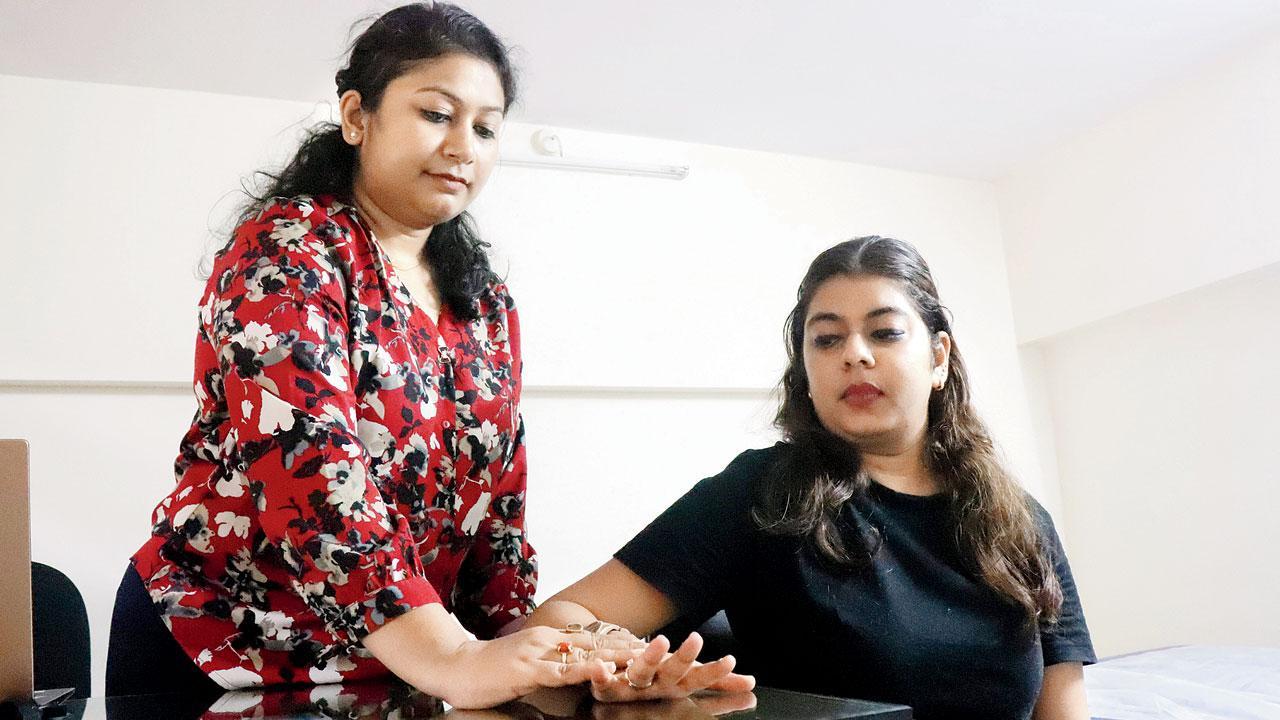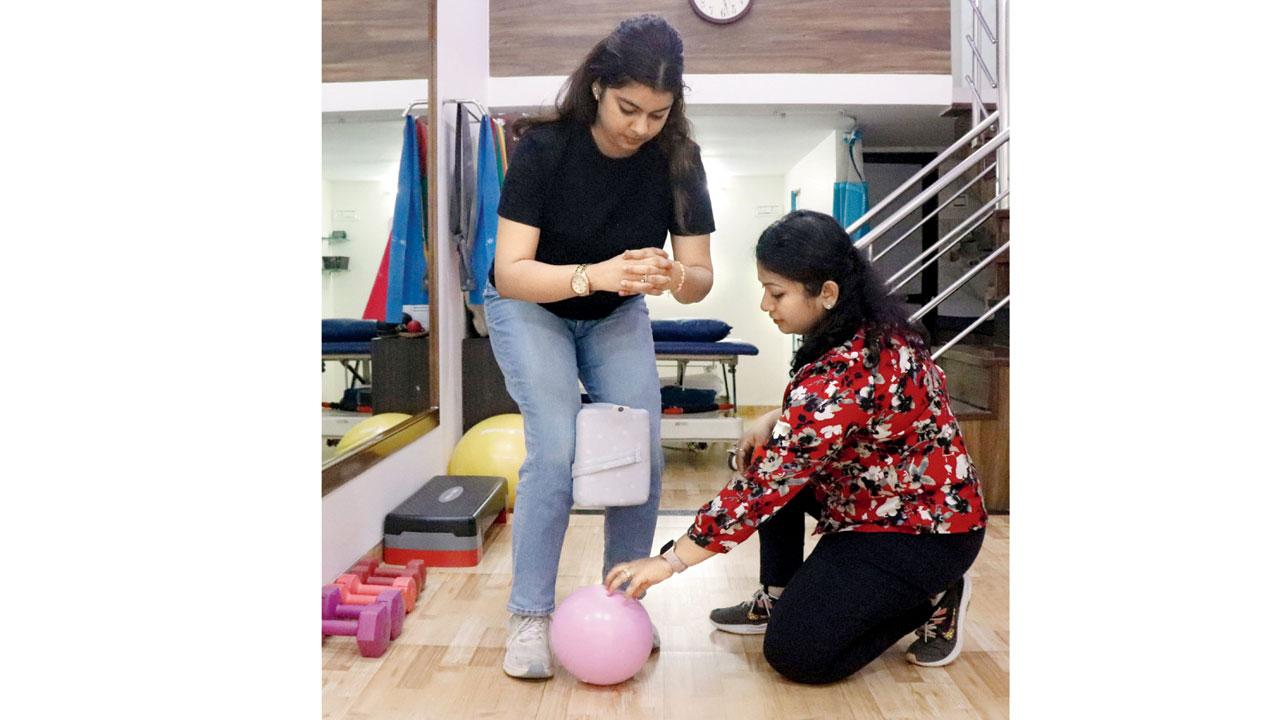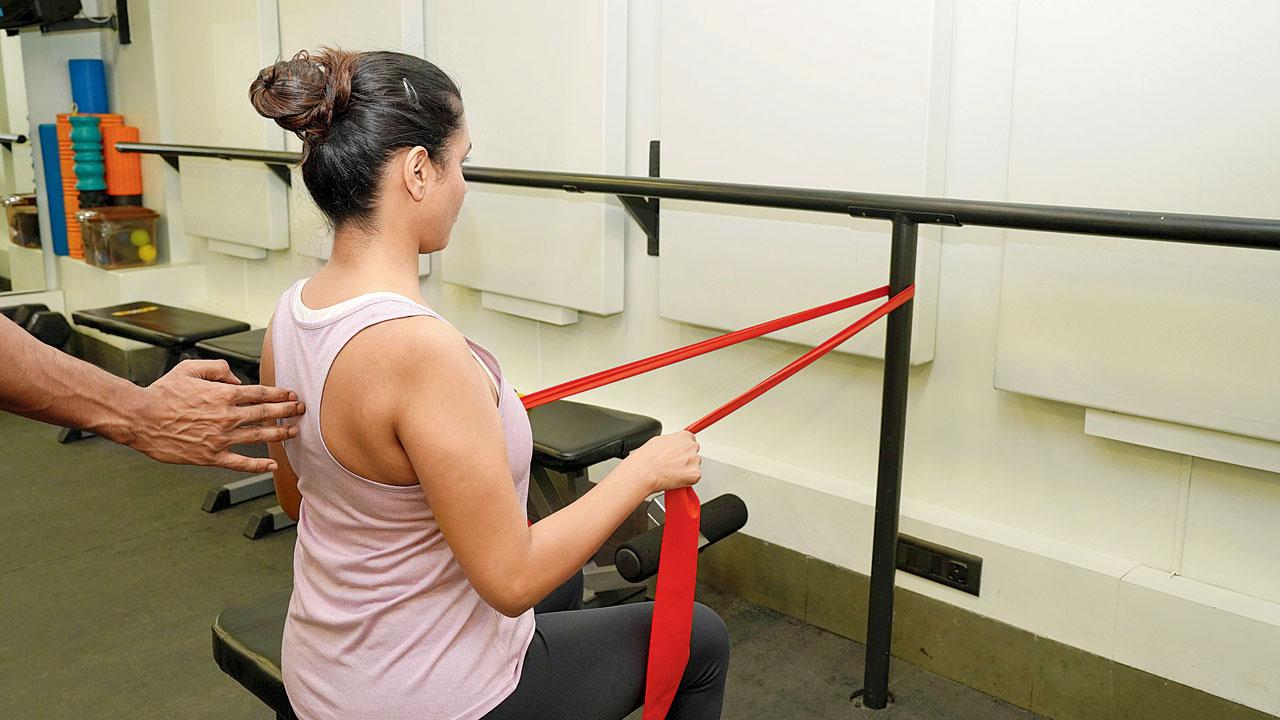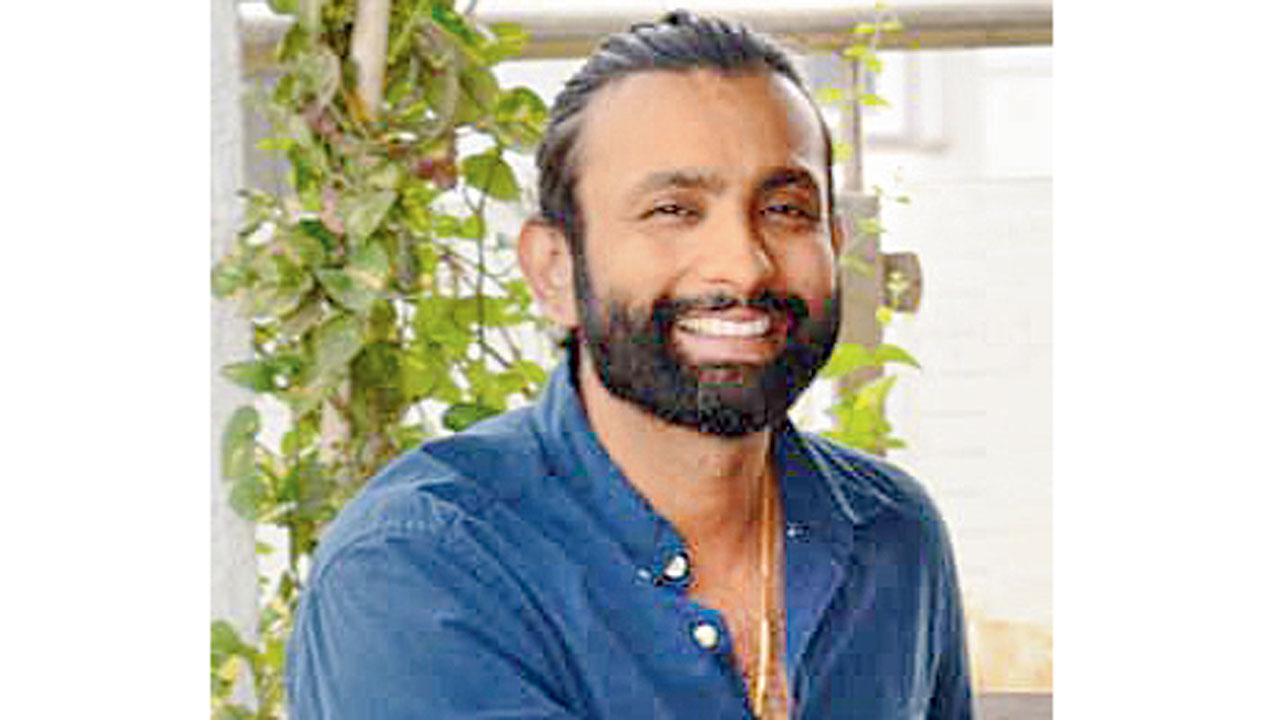We’re a city of gym-rats, marathoners, crossfitters, trekkers and yogis… until the physiotherapist points out not all our muscles are getting with the programme

Dr Megha Bhatnagar teaches a patient some stablising exercises to get all muscle groups to work in tandem; she explains that muscles work in chains
It’s a crippling pain in the knee that is caused by an overworked back. Or a tingling and weak thumb that comes by way of a sore elbow courtesy an unstabilised shoulder. Mumbaikars at varying levels of fitness are finding out that their small muscles—evolved to help us stand upright, lift objects and work that opposable thumb—are not doing their job. So much so, that the larger ones are overworking themselves by doing all the heavy lifting, tightening into cables that compress nerves. So you might think it is sciatica in your hip, but it’s just a manifestation of the hunching over the desk.
Which, of course, is where all the ills for the working class hero stem from. This “forward head posture” as physiotherapists call it, makes the muscles in the front of our neck lazy. A good 80 per cent of Dr Megha Bhatnagar’s clients at her Bounce Back clinic in Seawoods, Navi Mumbai, who work out regularly or have a steady fitness regime, complain of a nagging ache caused by one small muscle going off track, triggering all the other muscles to over work.

Some muscles weakened by our screen-peering lifestyle include the extensor digitorum longus or the wrist muscle. Pics/Anurag Ahire
“Mainly,” she explains, “muscles aches are because of muscle imbalances. We either overuse them [with the slouching posture adopted in front of computers and mobile phones], or we don’t use them at all. Activities of daily living involve multiple joints working together to perform a particular movement—to lift your arm, shoulder blade muscles need to stabilise the shoulder blade (scapula) over the rib cage so that it forms a sturdy foundation for the shoulder to move. Once the shoulder is able to move up, we can move the elbow and then wrist.”
A slouched shoulder is not stabilised, pushing the pectoral and upper pectoral and upper trapezius muscle to put in more effort. Eventually, it could pinch the nerve causing shooting pain down to the finger and thumb, and the corresponding leg. Some of the muscles weakened by our screen-peering lifestyle are the sternocleidomastoid and scalenes or the front neck muscles, the pectoralis minor muscles of the front of chest the extensor digitorum longus or the wrist muscle.
The source of this omnipresent niggling pain can be difficult to identify. Anagha Nabar Batus had been going for physiotherapy, on and off since 2019, for shoulder pain which she blamed on the usual suspect. She also worked out often. “I was given a few generic exercises,” says the 34-year-old founder of the integrated marketing agency, Runway Media. “It took an experienced physiotherapist to isolate the problem: It was not that my posture was wrong, it was that my scapula was not rotating as it should when I lifted weights or while doing a rowing movement. My traps and arms were doing it. The old physiotherapist gave me exercises to strengthen my arms and traps, which were already too tight from overwork.”

It took visits to several physiotherapists for Anagha Nabar Batus to find out that the pain in her shoulder was casued by her scapula rotating properly. Pic/Aishwarya Deodhar
Dr Vidhi Thakkar says something as simple as tucking your chin in can activate the back of the neck needed to stabilise your head as your peer at your screens. Dr Bhatnagar recommends clenching your glutes while walking, pulling the navel towards the spine while getting up, pulling shoulder blades down and towards each other all day, and pulling the abdomen and buttock muscle up to use thighs to climb stairs instead of leading with your torso can ease the strain in the back, and eventually the neck. “If your shoulders don’t stay up,” she says, “your chest collapses and you don’t fill up the lungs fully, which causes the diaphragm to overwork and seek assistance from the neck muscles, which makes them hurt. Even the muscles between your ribs can overwork to facilitate this, leading to rib dysfunction that manifests as a sharp pain if you lie on your back or side for a long time.”
“Muscles work in a chain,” explains Dr Thakkar of Replay Physio in Juhu. “A shoulder pain doesn’t indicate that the problem is in the shoulders; it could be in the neck. If your upper back is tight, you may not be able to lift your arm.” So an overworked lower could mean the glutes and lower abs are not working in tandem, sending a shooting pain to the knees.

Vikram Mittal’s home yoga routine led to the overuse of large muscle groups, and the smaller ones were neglected
This could also happen if you overuse one set of muscles only, like Vikram Mittal. The founder of fermented foods brand MAVI followed a yoga and HIIT routine at home for two years, but suffered waves of debilitating pain that pinned him to the bed some mornings. Several trips to the physio didn’t help until the Parsik Hill resident found one who gave him two sessions of dry needling—a technique that pushes thin needles into the muscles to relax them—and resistance training. Turns out, the small muscles in the upper back were not working. He now does functional training with resistance bands at the gym to target each muscle group systematically.
The disuse of the small muscles also means that if you play an odd game of cricket that needs these guys, they forget how to fire, sending you into an ‘Oww!’ Dr Bhatnagar says it’s also very important to treat scar tissue after injury or surgery as it can cause dysfunction in the movements.
 Subscribe today by clicking the link and stay updated with the latest news!" Click here!
Subscribe today by clicking the link and stay updated with the latest news!" Click here!










